Golden Gotou Part 6 of 6
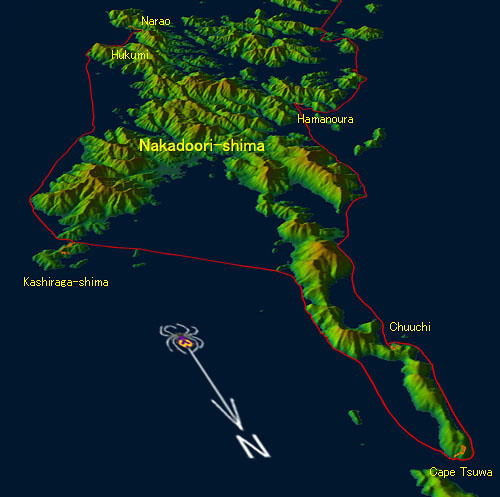
This map was constructed using Kashmir 3D software combined with our GPS track recorded on our trip.
To see the full map, click here
After a night in Hamanoura, where efforts to make an artificial beach in a windswept bay only created dunes in the local schoolyard and across the highway, leaving the sea as muddy as it was before, we set out north along the east coast of the curiously shaped Nakadoori Island. A terrific south wind is blowing, and we slide across the water at 8km/h merely holding the paddle at shoulder level. Occasionally a gust of wind picks whirls of seawater into the air; these come behind with a warning roar and we duck down while they pass over. Hugging the shore we feel safe but the mouth of one small bay needs to be crossed; we manage this safely and grab a break on the opposite shore. The wind almost blows us over sitting on the boulders and it seems incredible that progress on the sea is possible in these conditions. An announcement that all the ferries to Nagasaki have been canceled drifts to us on the wind from a nearby village PA system. We get into the boats again and once on the water, again things don’t seem so bad.
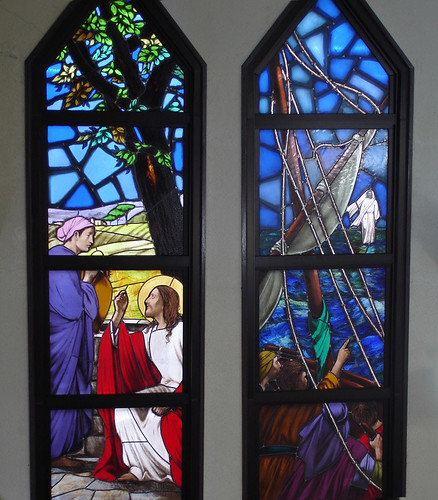
In another hour, we get as far as we safely can, to a tiny fishing port that is the last outpost of civilization on this side of the island. We stash the boats and go for a walk still in our wetsuits through sheets of torrential rain driven horizontally by the wind. We take temporary refuge at the oversize Chuuchi church (is that name a coincidence?) that has large stained glass windows commissioned all the way from Italy. ‘Christ walking on the Sea’ seems of relevance today; another one, bearing the caption ‘Jesus talks with the fishermen’ features some remarkably Japanese-looking folks juxtaposed with Christ in the background. We walk to the local store where we eat Cup Ramen and talk with the friendly storeowner, who confirms that the people in the stained glass windows are indeed her neighbors. When the bread delivery lady offers us a ride to the hot spring about 10km away we do not refuse, and wait out the rest of the storm soaking in hot water. No one else is in the baths, so we also take the opportunity to scrub down our stinking rubber suits with soap and hot water. Exiting the baths, we discover that place even has free Internet! Riding the bus back in the late afternoon we chat up the driver (we are the only passengers) who then takes us on a scenic drive, stopping the bus and pointing out all the interesting sites on the way: a steep cliff here, dogs tucked into a stone wall there…in the end, he waives our fare as he drops us off. The rain is just ending, the day’s light is fading, and the storm is over. Great timing!
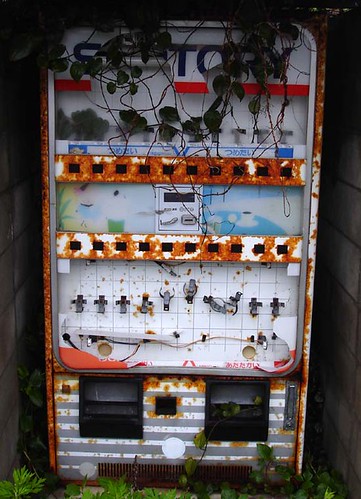
Cape Tsuwa is the northern end of Nakadoori Island, the tip of a freakishly long and narrow peninsula. Civilization peters out into the sea here, and as we walk a trail through dense vegetation, we see that the last house has long been abandoned, and the nearby jidouhanbaiki has long been out of commission.
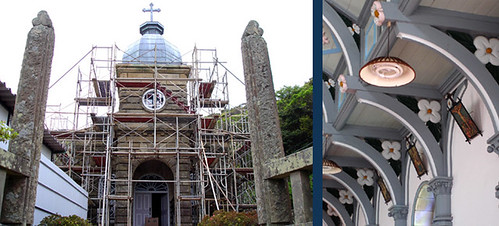
It’s a long day and we make only a few stops to see more churches: the one at Kasiraga-shima is unique because it is made of stone.
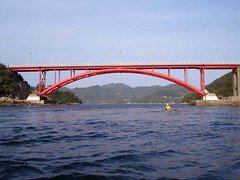
Going under this crimson red bridge Rik spots an unusual sight- a land snake swimming across the straight.
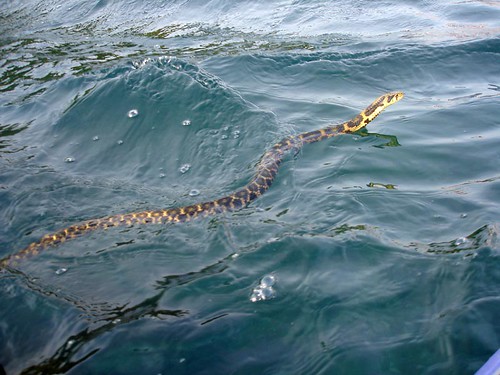
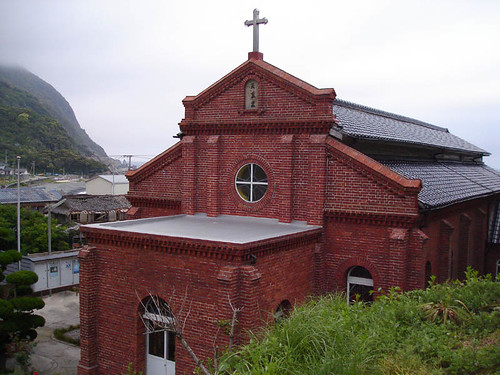
The wind begins blowing again, the waves build, and the current turns against us; by the time we arrive at the brick church in Hukumi, exhaustion is upon us; we were so busy dealing with the waves that we didn’t think to eat or drink anything. When we land we can barely haul the boats out of the water at the port.
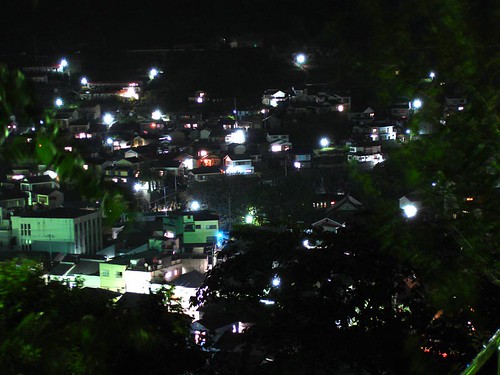
But Narao town is now only a couple km away. A final half-hour paddle and we enjoy another hot spring bath and Ramen noodles in this rather curious town all crowded onto the hillsides, with labyrinthine pathways and a shrine with an enormous banyan tree with spreading branches and hanging roots. The next morning, we haul our kayaks onto a ferry; by early evening we are back in Amakusa, really only 120km distant but seemingly a world away.


0 Comments:
Post a Comment
<< Home